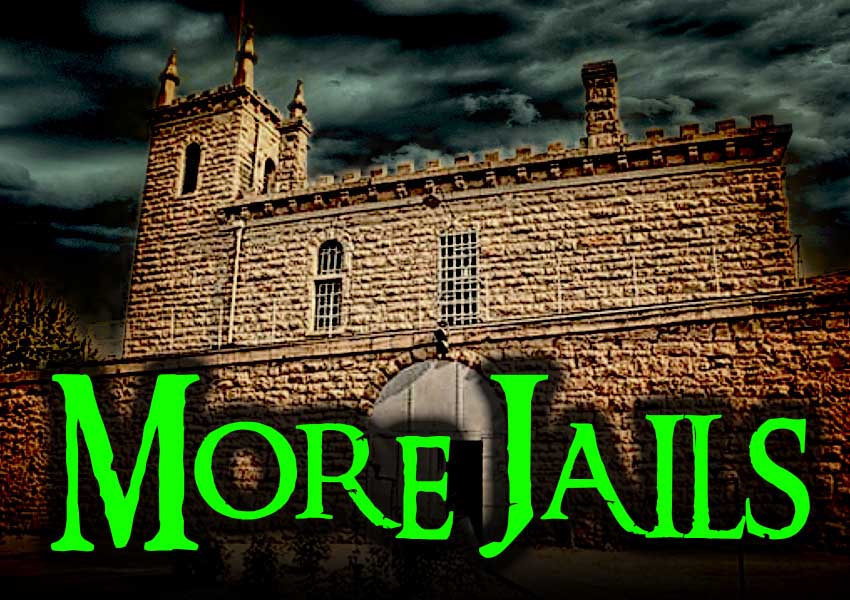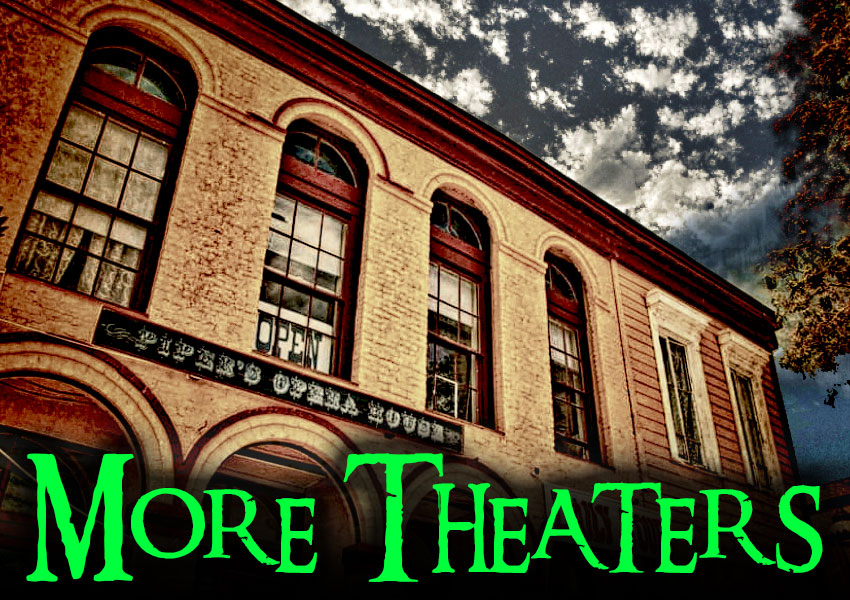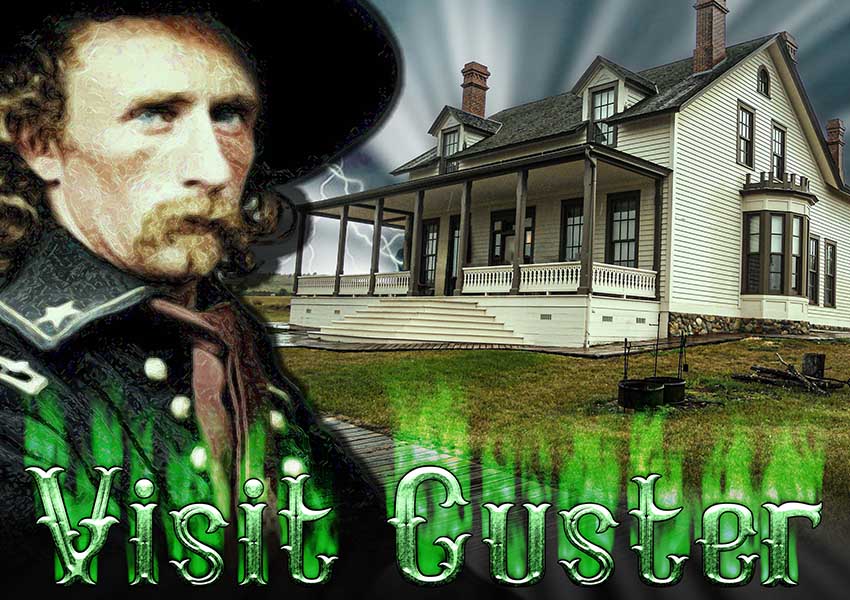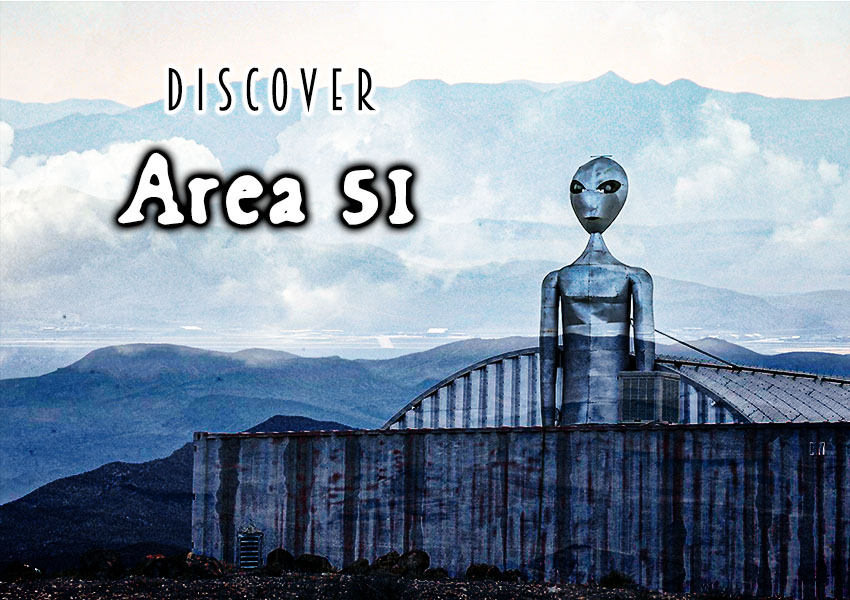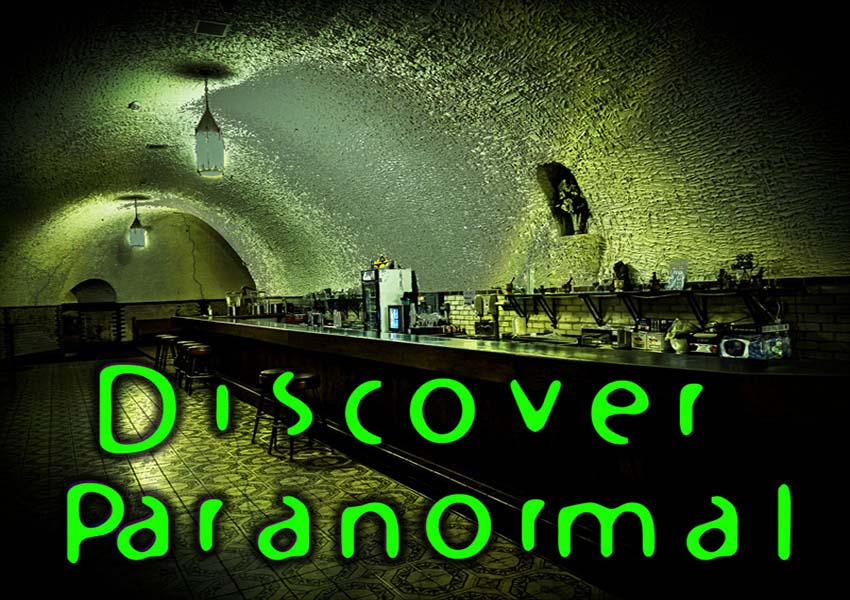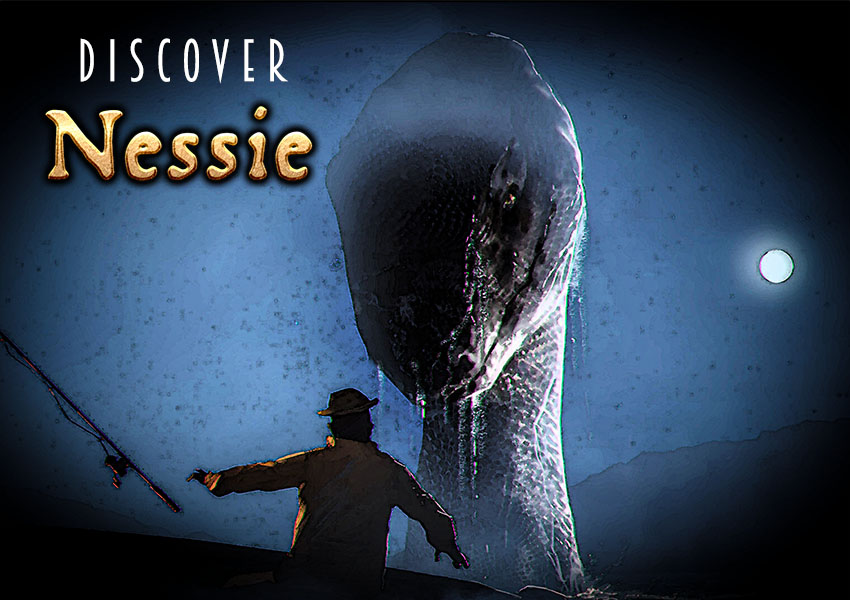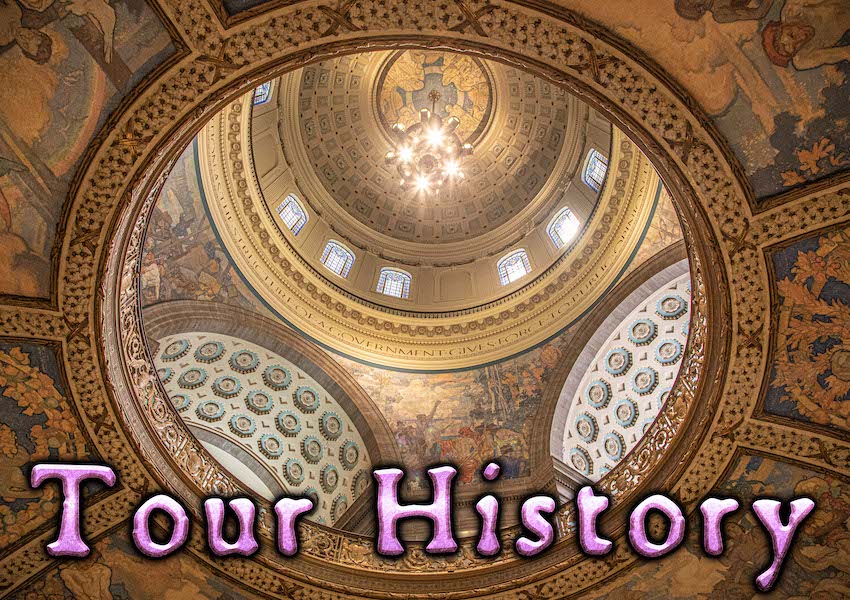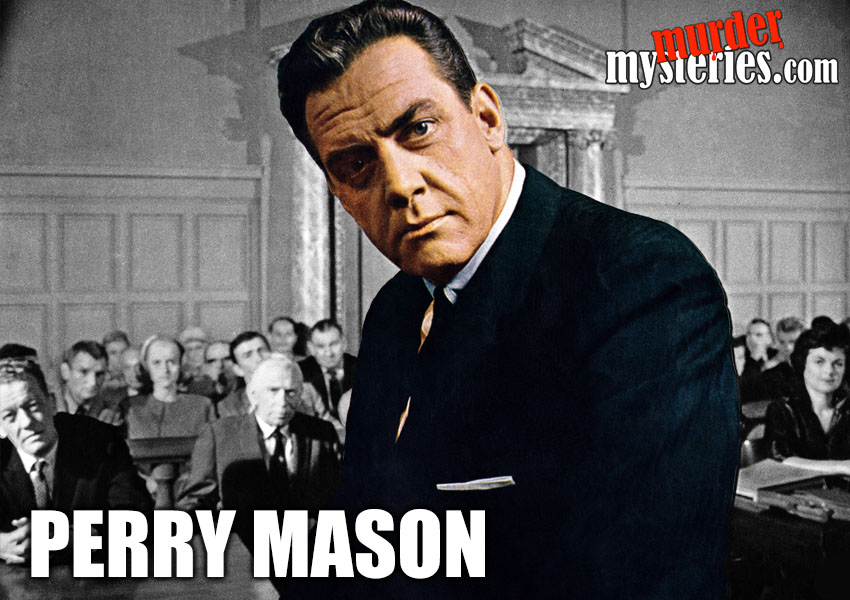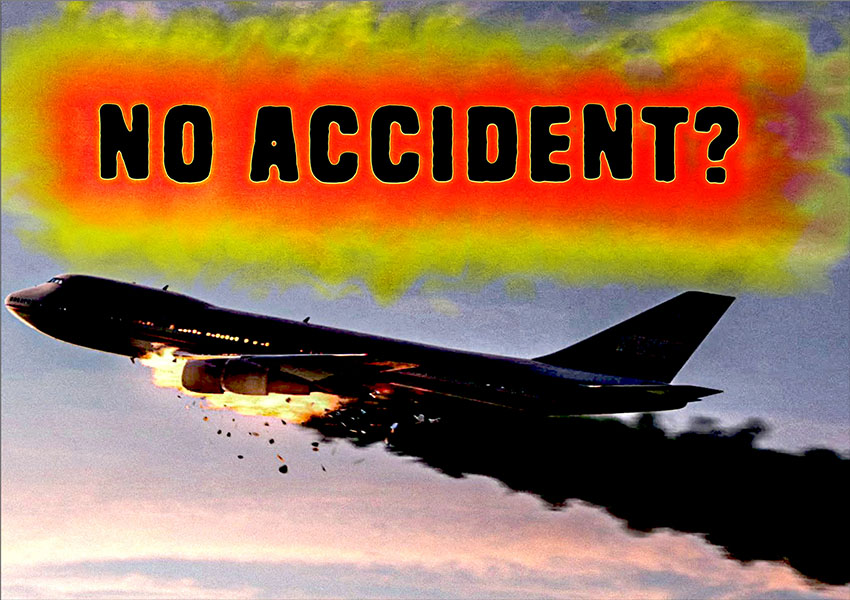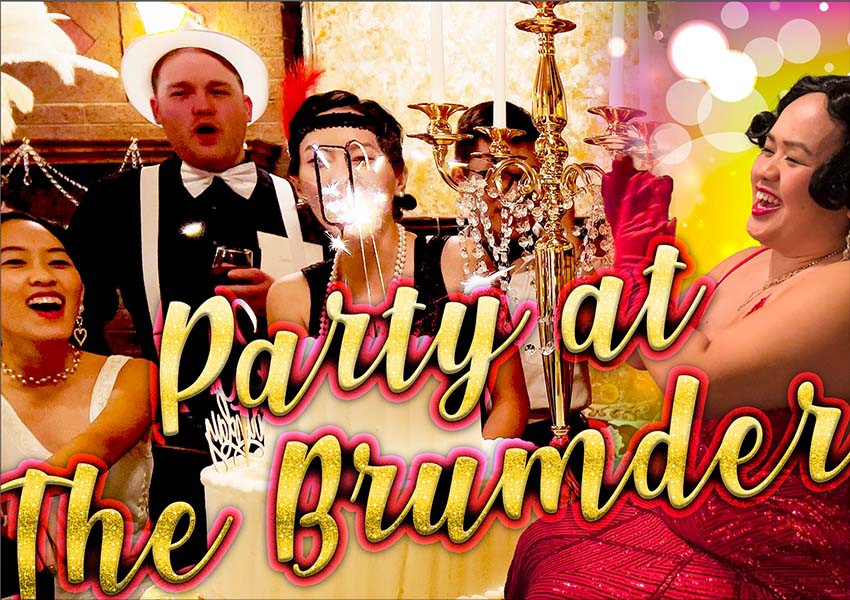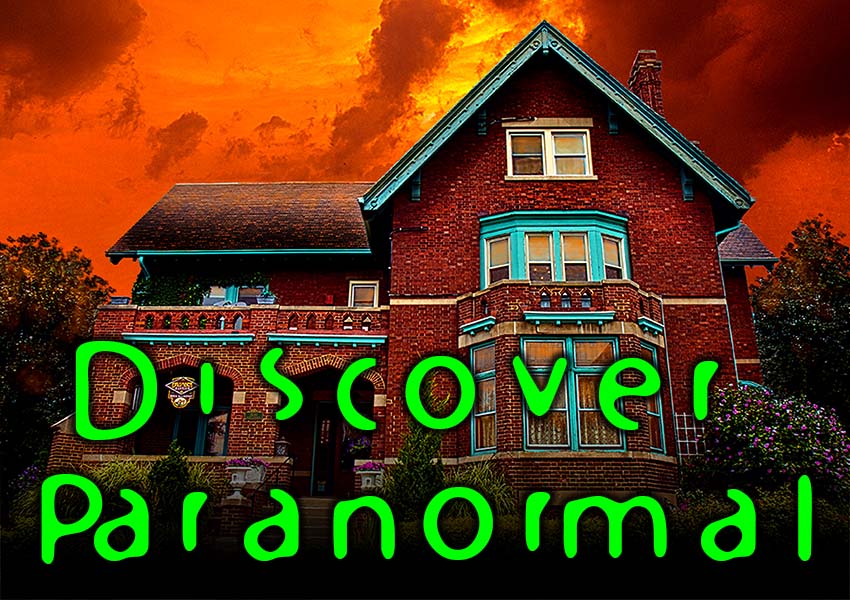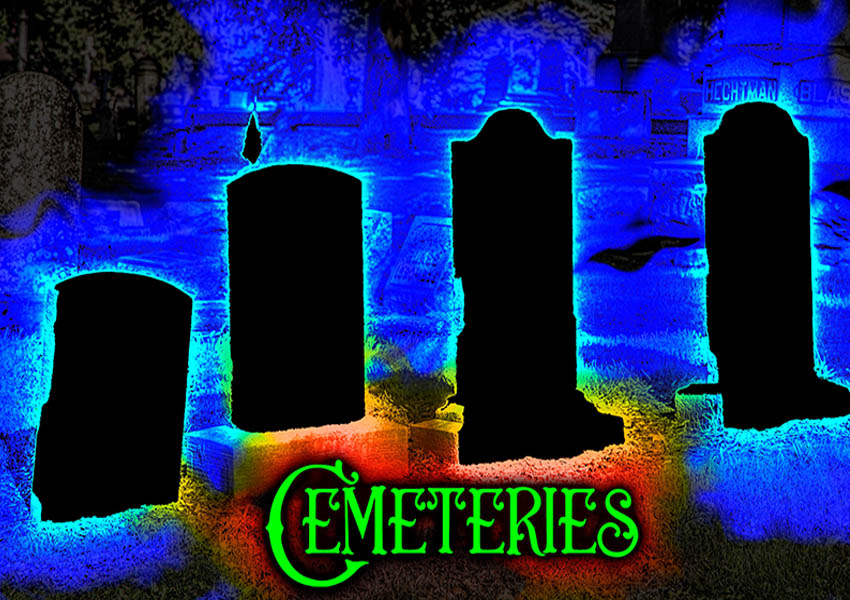Lake George New York
Fort William Henry Museum
Victims can’t forget the betrayal of the French, and their scary and violent deaths.
The brutal killings caused spectral unrest.
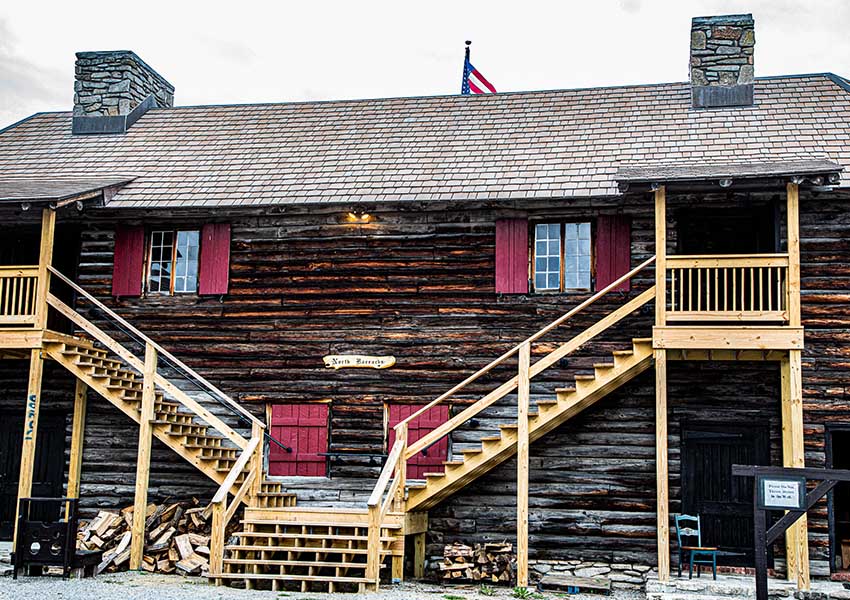
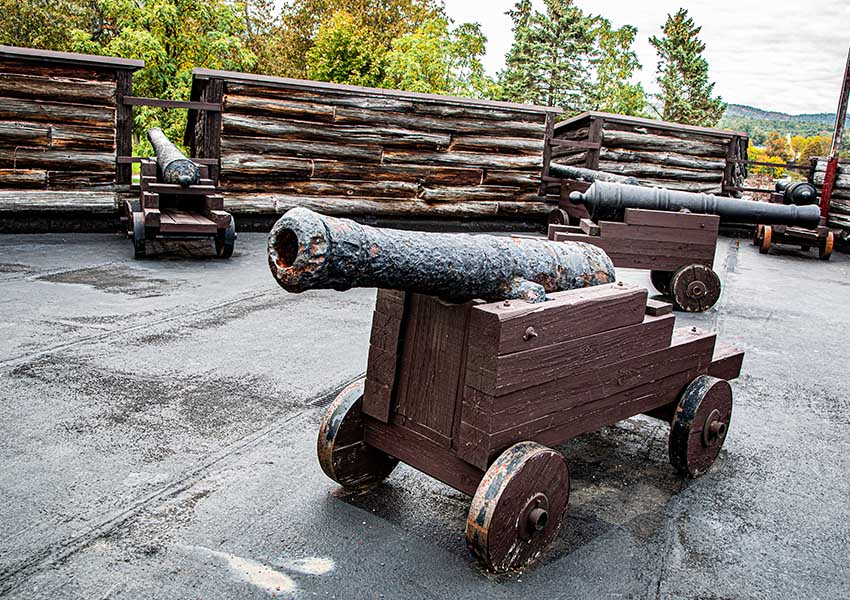
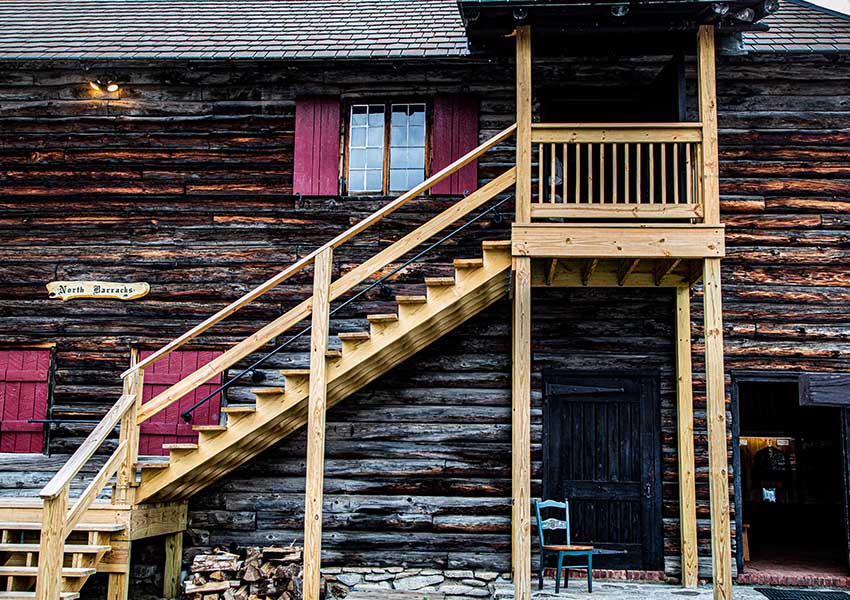
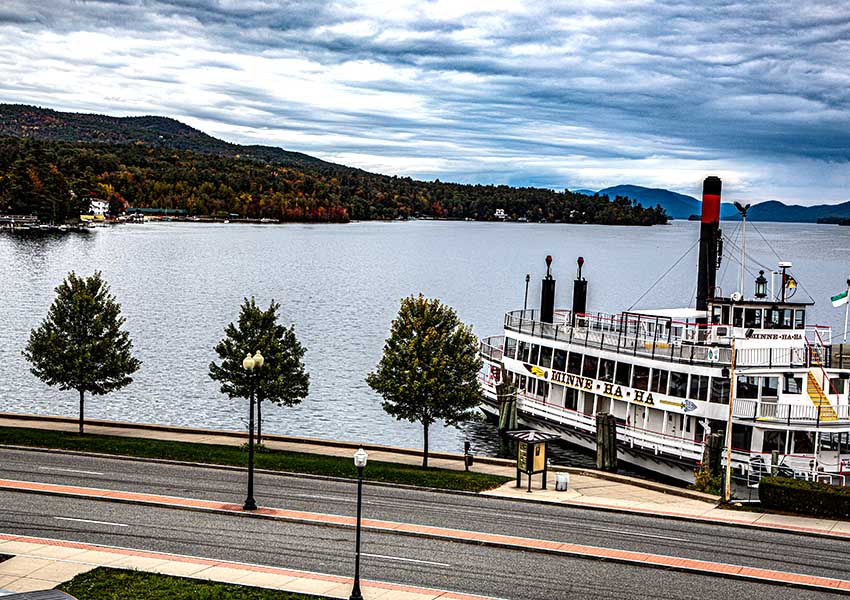
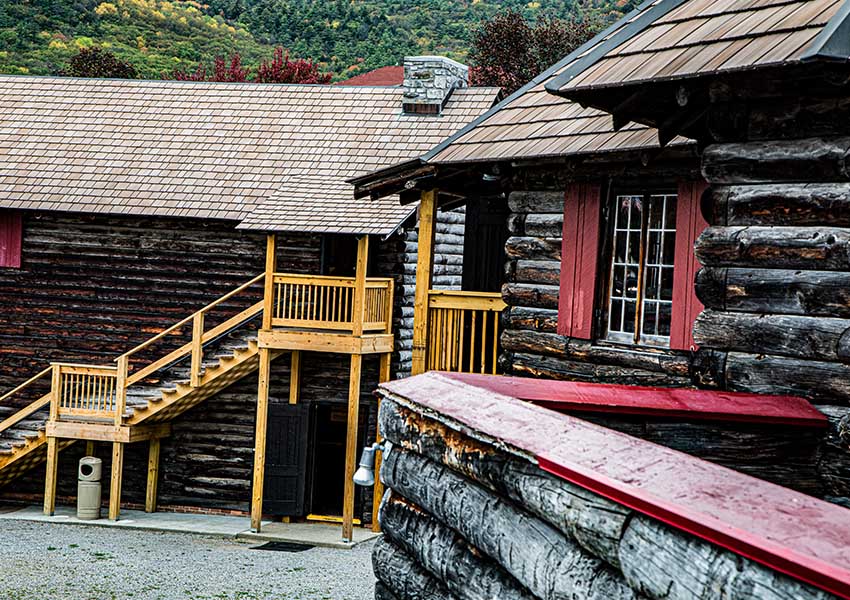
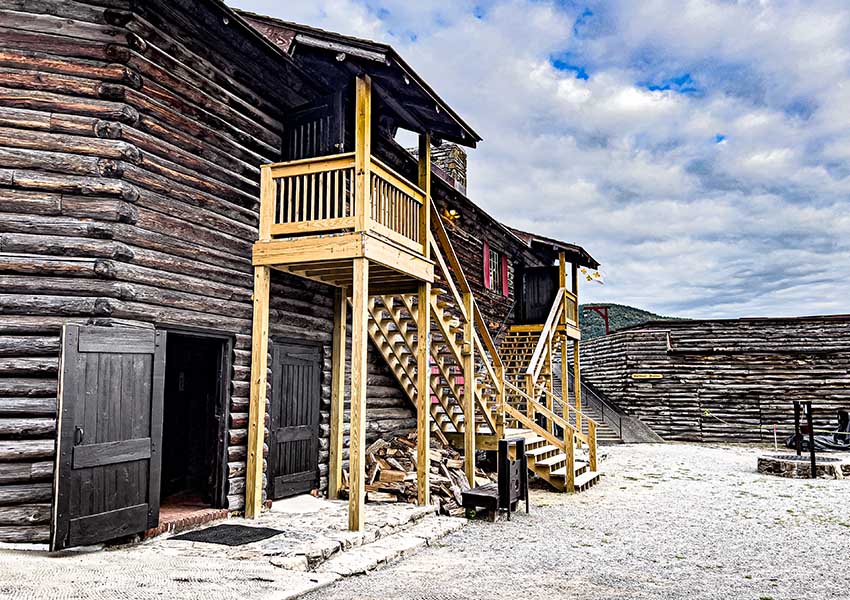

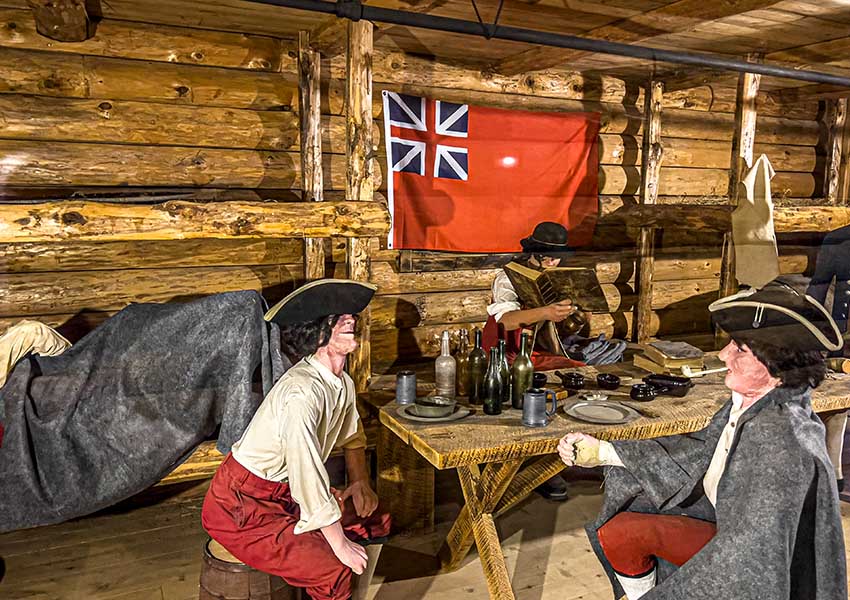
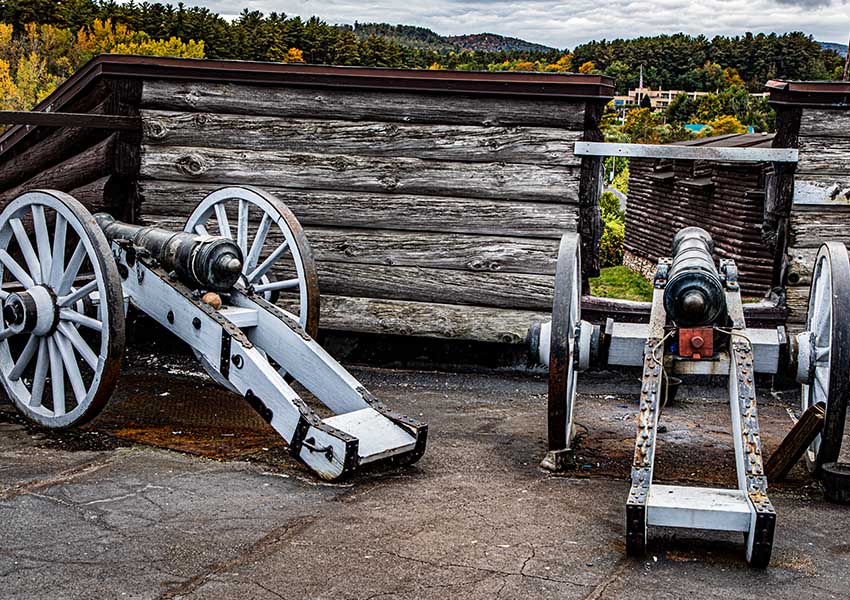
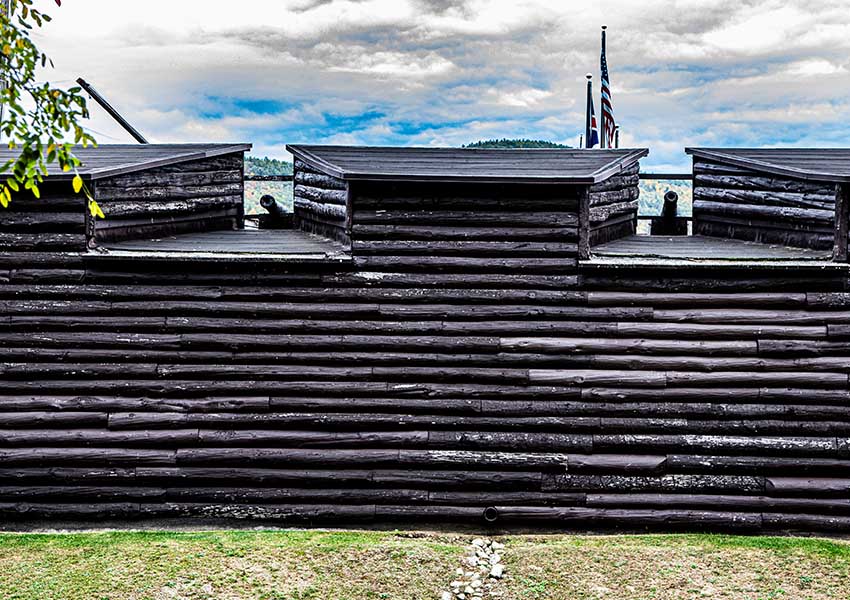
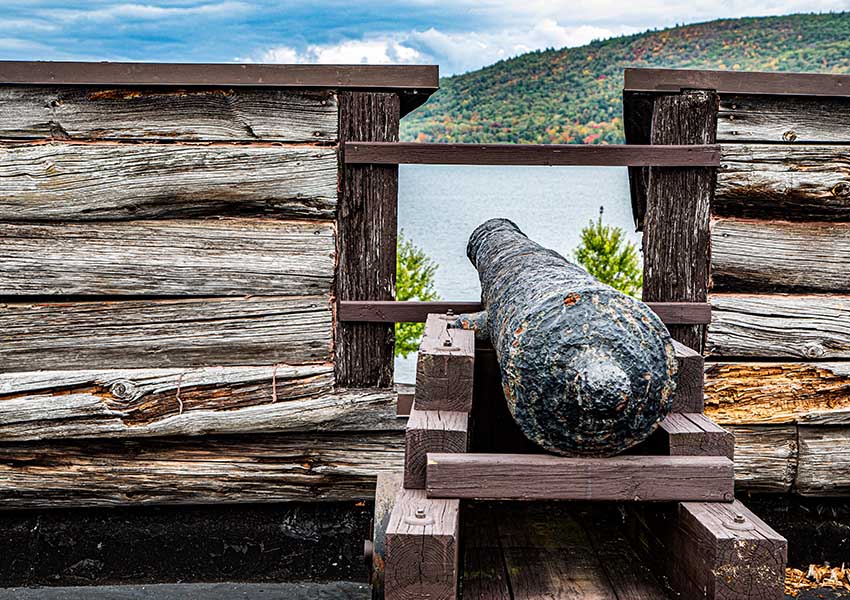
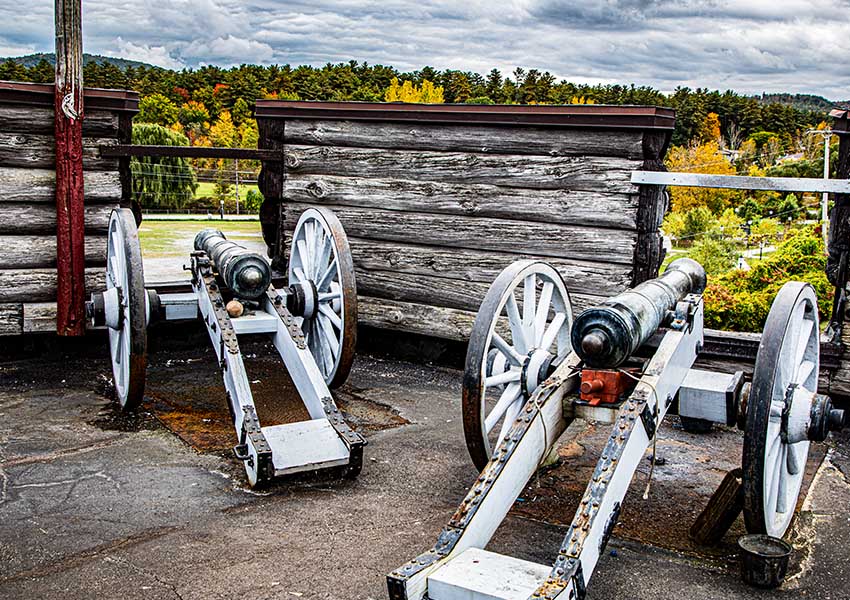
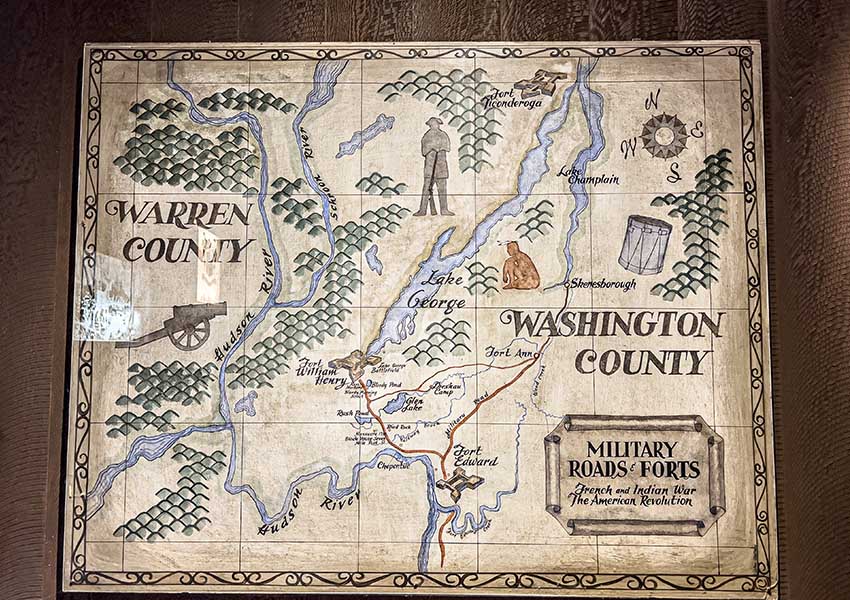

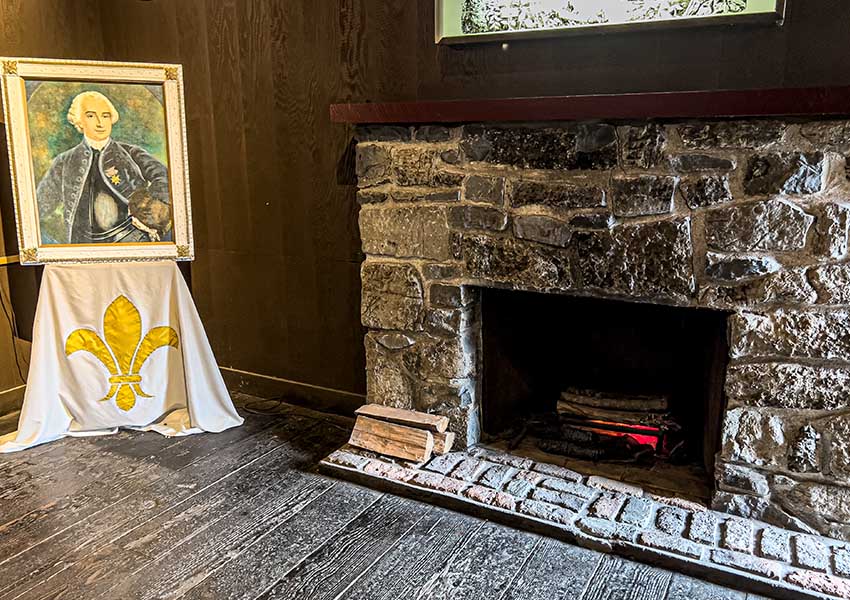
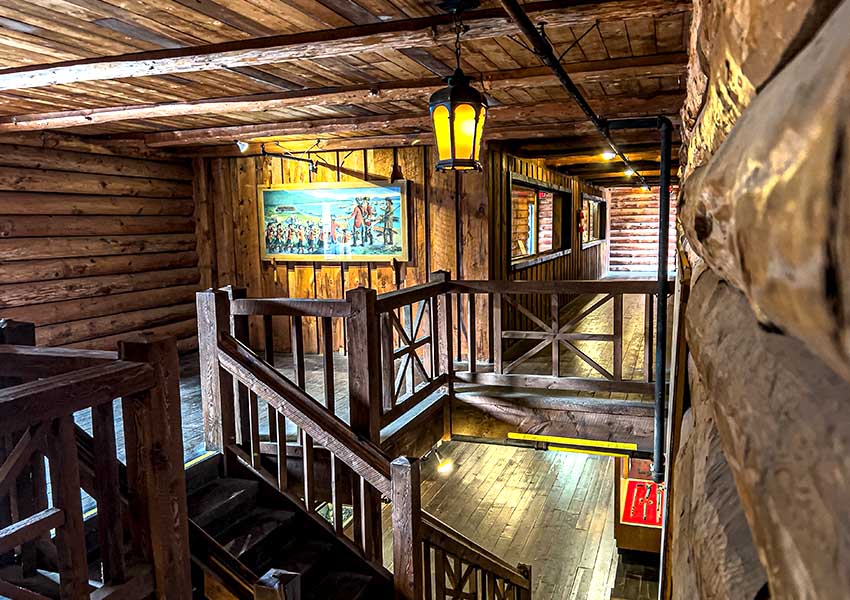
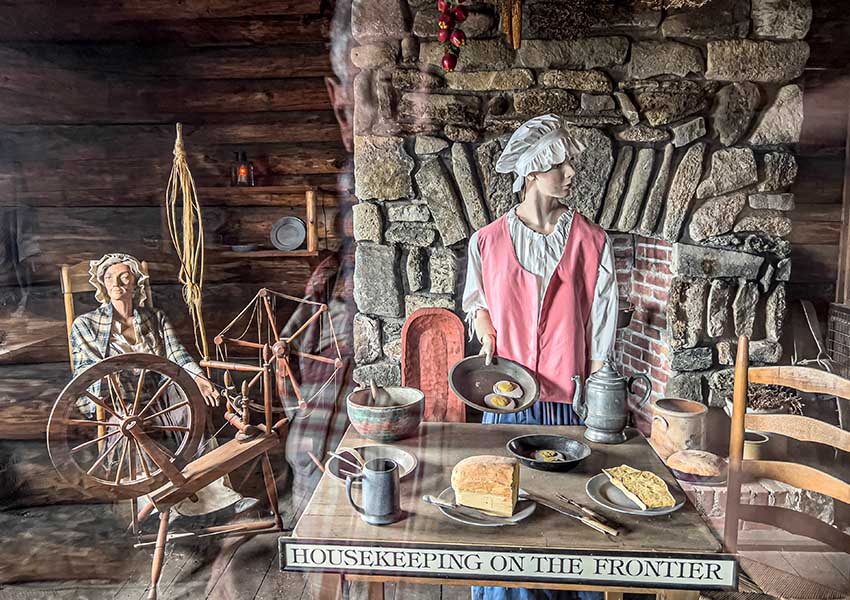
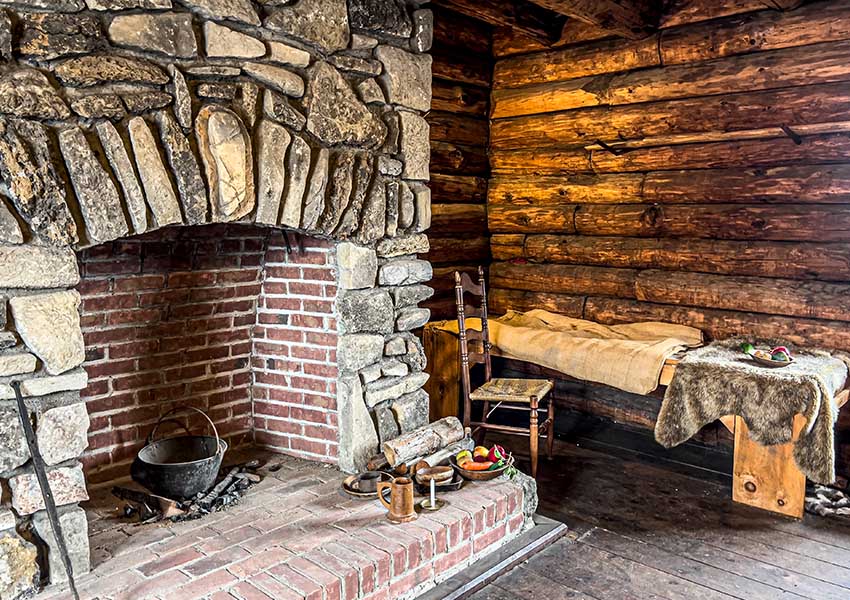

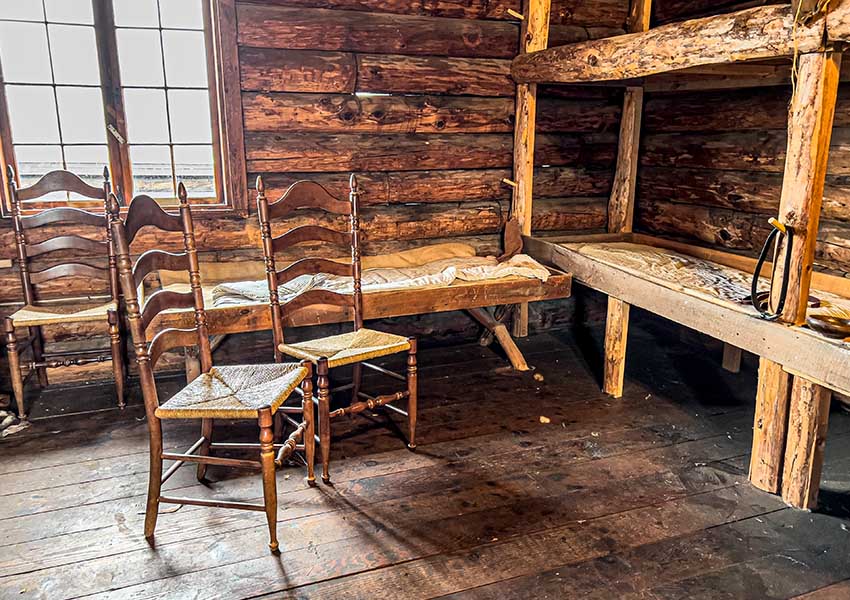
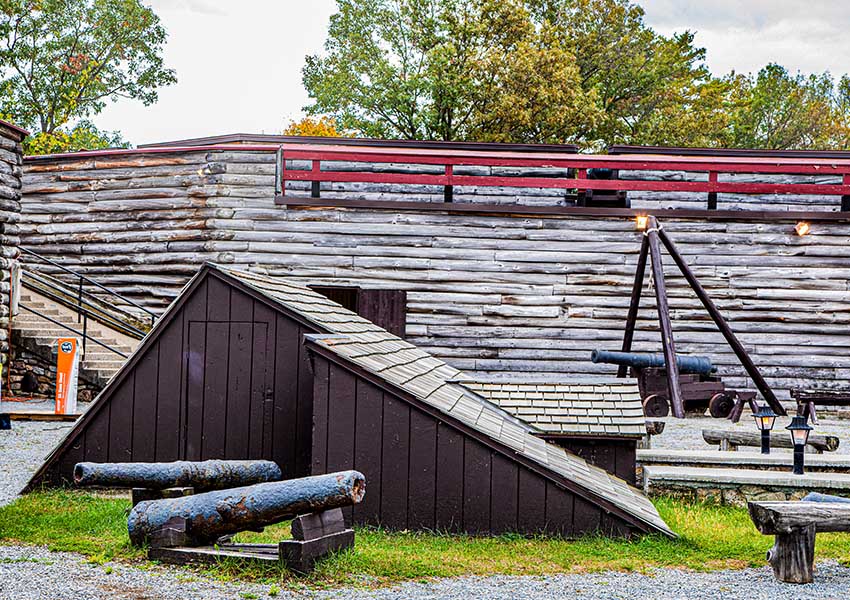
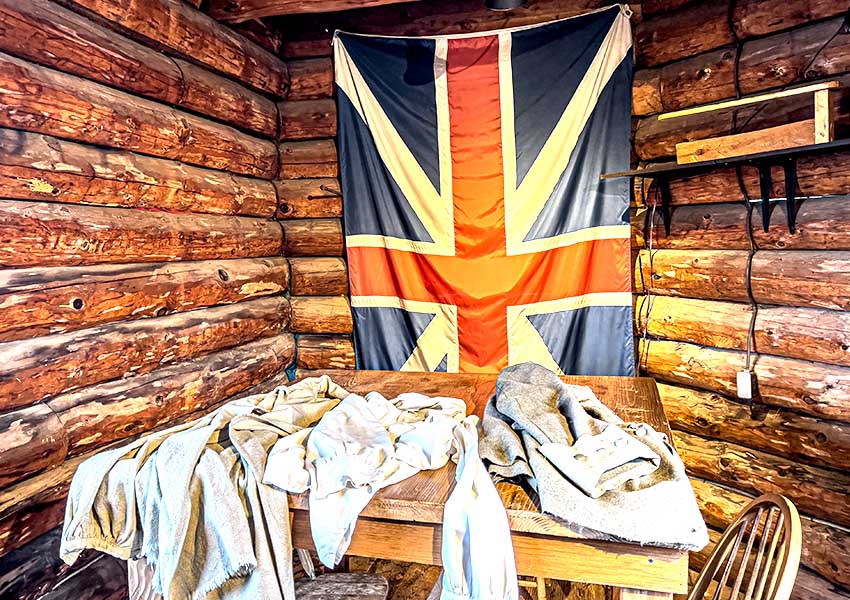
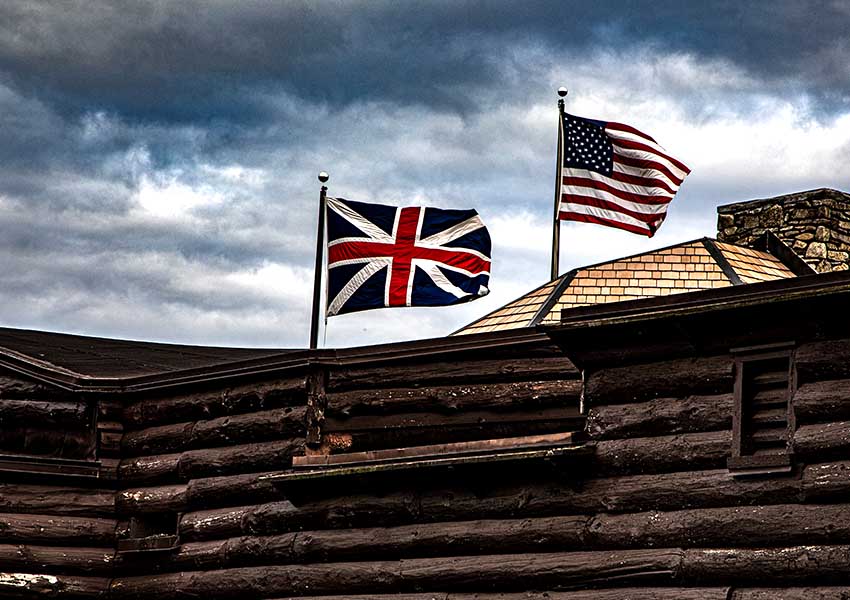
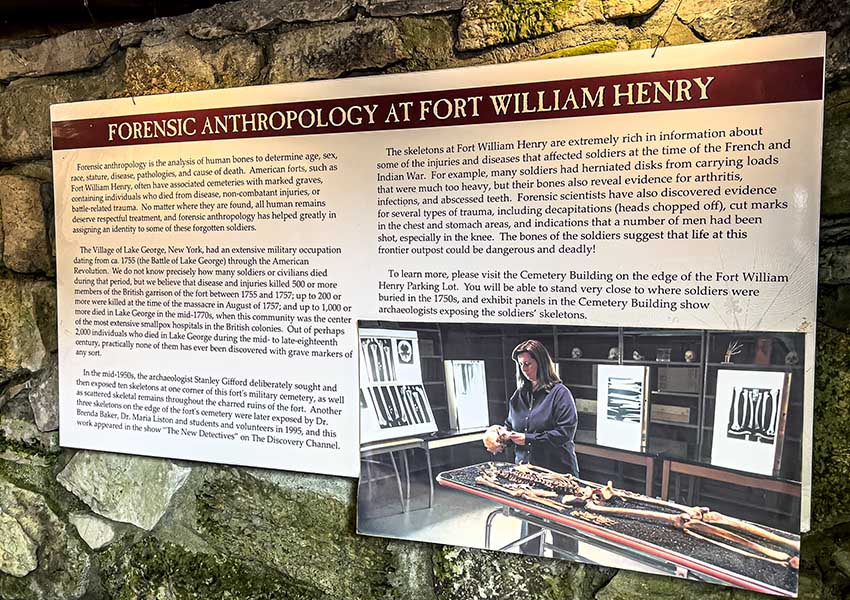
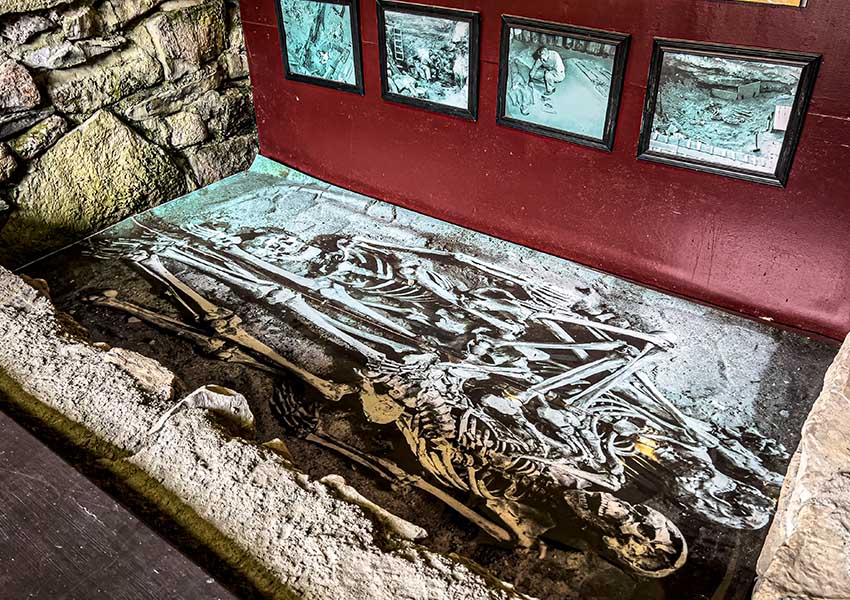
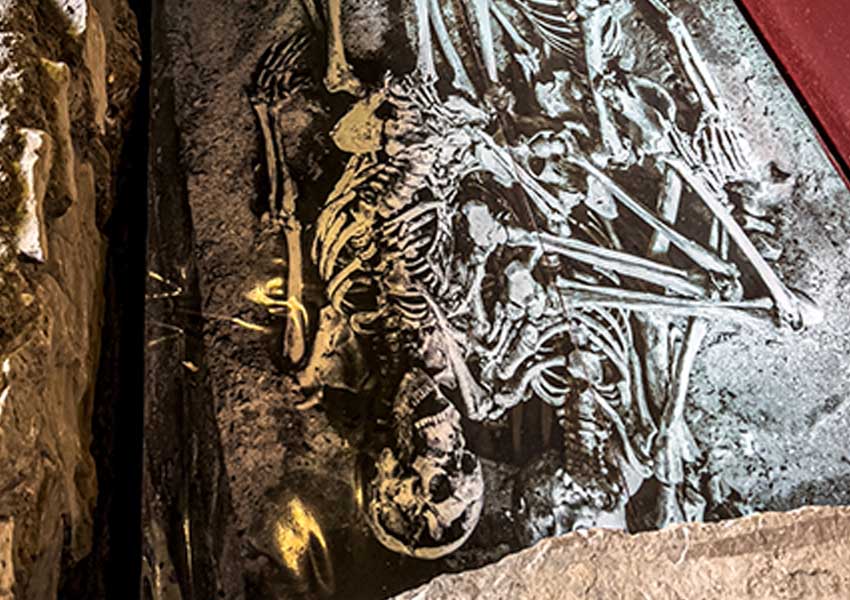
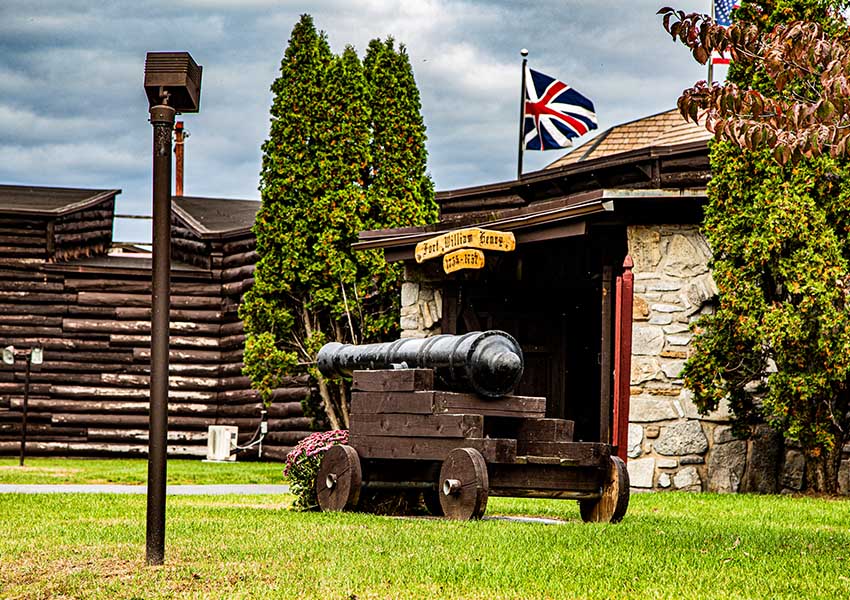

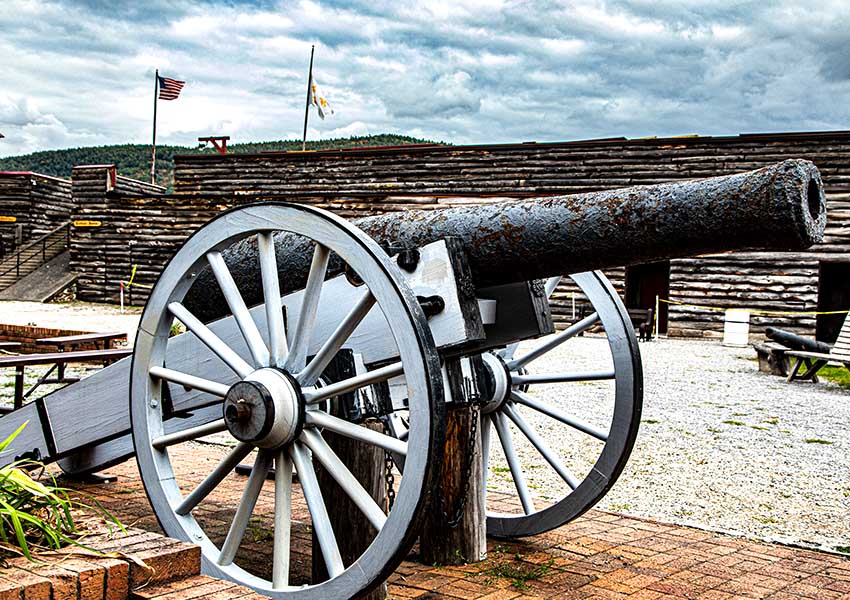
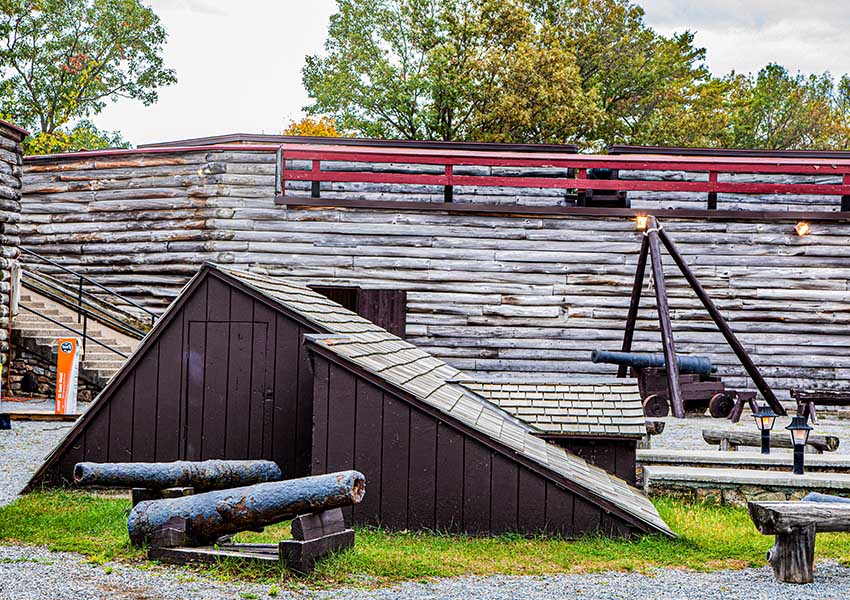
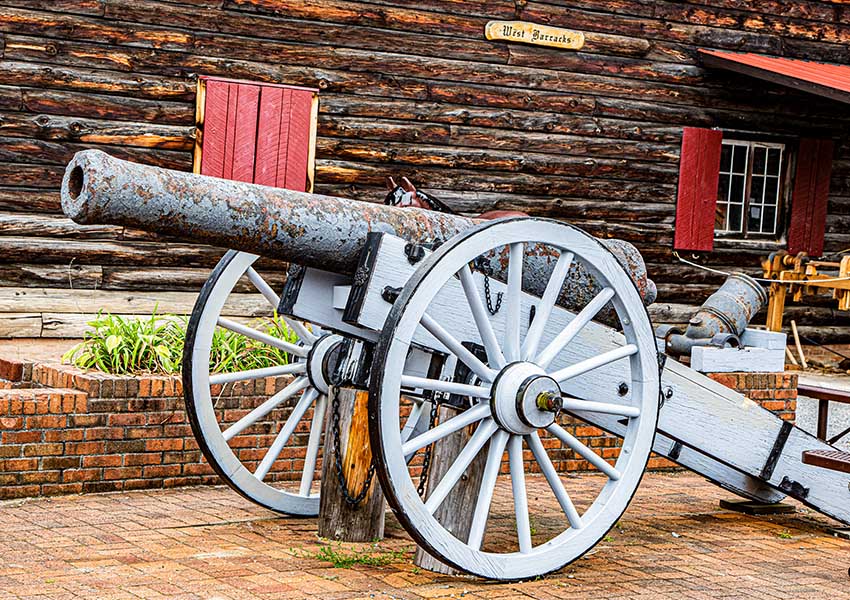
DESCRIPTION
Fort William Henry Museum is a completely reconstructed structure, an accurate representation of the 18th Century British Fort that once stood here. Thanks to the efforts that successfully got a hold of the original British fort blueprints, and archaeologists’ research, they figured out exactly where rooms and areas of the fort were located. The private organization, Fort Henry Foundation were then able to rebuild the exact replica of the fort that once stood here.
Tom and I visited Fort William Henry Museum in the fall of 2021, and took the official tour of this fascinating place. The fort’s buildings were all two-story, and are found around a large central courtyard.
“Its walls were thirty feet (9.1 m) thick, with log facings around an earthen filling. Inside the fort were wooden barracks two-stories high, built around the parade ground. Its magazine was in the northeast bastion, and its hospital was located in the southeast bastion. The fort was surrounded on three sides by a dry moat, with the fourth side sloping down to the lake.”(Wikipedia)
Because it was built to hold just five hundred people, a lot of its personnel were in entrenched camps around the fort, very much like it was at Fort Stanwix in Rome, New York.
The entrance leads to a large lobby, a staging area that runs the length of the side of the fort facing the street.
There are large displays of soldiers in uniforms, a cannon, a diagram portraying the six-day siege on the fort, and other documents of interest. At the end of the lobby is the Gift Shop.
As it was with other military installations, Fort William Henry was like a small city, taking care of the needs of the soldiers and their families stationed there, by giving them living space and providing the services and materials, as well as supplying the military tools for defense and offensive endeavors in military missions. There were storage areas for armaments, and gun powder was stored in The Powder Magazine, needed for cannons.
The structure that faces the north side of the courtyard, and shares a wall with the lobby, and is parallel to the entrance, is the enlisted men’s West Barracks and its second floor West Barracks Loft. Both floors are now home to the main part of Fort William Henry Museum.
The West Barracks first floor has displays showing what life was like here, and a large array of tools and weapons; artifacts found in the ground before the reconstruction was started. Archaeologists also found a boatload of tomahawks that are on display on the second floor in a large display case, all lined up in a row.
A nice collection of canoes can be found in this loft as well, along with a duty roster for historical effect, displayed by museum staff. A list a soldiers’ names who were stationed here is posted.
Other structures around the courtyard had a variety of uses, such as the Officer’s Barracks, eating areas, a hospital, supply store, barber, kitchen, repairs, etc.
Near the East Casement entrance, there is a military crypt that was built to honor the five soldiers whose skeletons were found by archeologists in their initial dig.
Toward the eastern part of the courtyard, there is a large, reconstructed garden patch to grow fresh vegetables.
HISTORY
During the French and Indian War, Fort William Henry was a wooden and stone British stronghold constructed in 1755 near the base camp established by Sir William Johnson. This strategic spot was seen as a plus, being on the south shoreline of Lake George. A fort built here would counter the influence of the French Fort Carillon located in the northern part of Lake George on a large rocky ledge, attached to Mount Independence between Lake George and Lake Champlain.
British military engineer William Eyre of the 44th Foot oversaw the construction. It is described on a Wikipedia page: “Fort William Henry was an irregular square fortification with bastions in the corners, in a design that was intended to repel Indian attacks, but not necessarily withstand attack from an enemy armed with artillery.” Oops!
The existence of this new British fort made the French forces uncomfortable. As the structure of Fort William Henry would be easy to attack with artillery, a plan to do so was hatched. So, they recruited six Native American tribes, one of them being the Mohawks, by enticing them with the prospect of having the pick of the plunder if they helped the French forces to capture Fort William Henry.
In the spring of 1757, the new commander of Fort William Henry was George Monro, who had under his command a garrison drawn from the 35th Foot and the 60th American Foot. By June, the population of the fort swelled to one thousand, six hundred soldiers due to the provincial militia companies from Connecticut and New Jersey.
 The old Johnson camp southwest of the fort, became the area where the overflow of soldiers made an entrenched camp there. When the French were about to attack, the total population at the fort and at the camps outside swelled to two thousand, three hundred men. Condtions were poor and many men got sick.
The old Johnson camp southwest of the fort, became the area where the overflow of soldiers made an entrenched camp there. When the French were about to attack, the total population at the fort and at the camps outside swelled to two thousand, three hundred men. Condtions were poor and many men got sick.
A huge French force of 8,000 was made up of French soldiers and two-thousand Native Americans from six different tribes. The siege started on August 3rd, and when Fort Edward didn’t send any reinforcements, the garrison surrendered on August 8th.
The French had promised to pay the Native American warriors with the spoils of war. However, the French let the defeated British troops take their stuff with them, except for their bullets. Most of the other tribes were annoyed but accepted this lie. However, this put the Mohawks and some other Native Americans in a foul mood, wanting revenge. They felt that they had to send a strong message to the French.
The French didn’t fully understand the cultural aspects of some Native Americans and the Mohawk tribe, not realizing that if they didn’t follow through as agreed, they would revert to how they had always done business with defeated foes. Uh Oh!
The Mohawks first hunted down the unarmed British soldiers and their families on their way to Fort Edward. There were 180 brutal deaths, though the French soldiers accompanying them managed to beat back the Mohawk attack and saved many lives.
Secondly, the warriors returned to the fort, after drinking a lot of alcohol. They found the eighteen wounded British and American soldiers in the infirmary, their families, and other British personnel, in the West Casement.
All were tortured and brutally killed. Not only the British, but also Afro-Americans, British-affiliated Native Americans, the French guards, and all the women and children present. No one was spared, because all were considered vermin who had encroached on their land.
On the other side of the courtyard, they found more people hiding in the East Casement. One wounded soldier was beheaded and his head was taken as a prize by one sick individual!
This bloody massacre was unimaginable to the French, who must have been horrified at the carnage of cruel murders of defenseless wounded soldiers, their families and the others so brutally killed. Too much blood had been spilled here.
The French buried what remained of the dead in unmarked mass graves, both outside and inside the fort. They burned the entire wooden fort to ash, to wipe out their glaring mistake and the violent end of the defenseless.
The land stood vacant until the mid-1950s, when money was raised to build a sturdy reconstruction of the entire fort, which must have pleased the spirits of the massacred.
In 1953, teams of college students, led by trained archaeologist Stanley Gifford, carefully conducted an archeological dig. When they found the five skeletons buried in the east casement area, the private contractors built a Military Crypt to hold the remains. One skeleton had no head, proving the urban legend that a brave cut it off as a trophy to be true.
When many bodies were found in mass graves around the fort location, it was labeled as a Cemetery. It is a peaceful looking place with a nice green lawn and attractive shrubs etc.
Despite the efforts of the living, to make the land respectable for this cemetery, many spirits are restless due to the way they died, and reside here at the place of their demise.
HISTORY OF MANIFESTATIONS
When a structure is destroyed completely, spirits who have bonded to it may bond instead to the land where it was located. When a reconstruction of their structure takes place, they are ready on the spot to move back inside to work on what is making them restless, looking for eternal peace.
Custer House at Fort Abraham Lincoln, ND (This reconstructed house museum, built from Custer’s own blueprints, brings comfort to the Custer family and other casualties of the Battle of Little Bighorn).
Fort Stanwix, NY (Land-attached spirits moved into the reconstructed fort buildings that were built on land that had once had other buildings built there).
Fort Abercrombie, ND (When Fort Abercrombie started to be rebuilt on vacant land, spirits who had bonded to the land, moved back inside the rebuilt structures).
Fort William Henry, NY (When this fort was carefully reconstructed, the restless souls who were buried in unconsecrated land around it, moved back inside).
When people literally lose their heads when executed by a bad hanging or are murdered brutally, they often are restless indeed, upset about the mutilation of their bodies.
The Old Faithful Inn, WY (A bride was cruelly murdered by a husband who cut off her head).
The Walker House, WI (The unpleasant spirit of William Cafe lost his head when it popped off from a jarring hanging. He flaunts his head in front of the living, as well as doing other obnoxious activity).
Bobby Mackey’s Music World, KY (Two satan-worshipping dental students, Jackson and Walling, were members of the satanist cult who practiced in this building. They drugged Jackson’s pregnant girlfriend, Pearl, and tried to perform an abortion to get the 5-month-old fetus. When they failed to do so, they cut off her head while she was still alive and awake, as she tried to fight them off. She searches here for her head, and her baby. Her killers are stuck in the building with her).
Fort William Henry, NY (When the French didn’t pay their Native American forces with the spoils of war as agreed, they had a temper tantrum and brutally killed the wounded British troops and everyone else who was left behind in the fort. One Native American cut off the head of one of the wounded for his personal trophy).
Spirits of people who were massacred with no mercy try to find peace from the trauma of their brutal deaths by residing in a place where they once found peace and have fond memories.
Mission Miguel Church, CA (The spirits of twelve people were brutally murdered by greedy thieves in 1848 when this structure was an inn. These spectral victims still reside in this church, trying to forget their horrible demise by remembering their good times here).
Kahler Grand Hotel, MN (The spirit of Helen Vorhees, heiress of the Brach candy-making family, wasbrutally killed by underworld thugs. She visits/stays here for peace and possibly justice).
Lumber Baron Inn & Gardens, CO (The spirits of two young women who were brutally killed still reside here in their shared bedroom, restless and wanting justice. They find some peace from the sympathy given them by the other spirits in this structure, and by watching the living).
Fort William Henry, NY (The spirits, restless from their traumatic deaths when they were helpless and couldn’t defend themselves, can find ways to make themselves feel better here, by working through their trauma, reliving any pleasant memories, continuing in their service, being distracted by the exhibits, and may even take out their frustration and anger on the living).
When people are buried in mass graves, buried with no headstone, or in unconsecrated ground, their spirits can be restless.
Sacramento Cemetery, CA (Plague victims were buried quickly in a mass grave. Their remains were forgotten and wound up underneath other graves that were put on top of them).
Manassas National Battlefield Park, VA (Soldiers who were killed here were often buried where they fell, with no markers).
Fort Ticonderoga, NY (A lot of dead soldiers were buried in the grounds around the fort and were not marked).
Fort William Henry, NY (Soldiers and their families who were killed during the siege, or killed on the trail to Fort Edward, or inside the fort’s casements were buried in the grounds just around the outside grounds without markers).
Spirits can become attached to special items they owned while alive. Or, they may be attached if the item caused their death.
Cleveland Grays Armory Museum, OH (Some spirits who once were members are attached to some of the artifacts on display here).
The Museum of Shadows, NE (Some of the items on display here have been used to kill others. The spirits of the people killed have sometimes attached themselves to the object that was used).
Union Train Station, UT (There is a firearms museum, that attracts spirits who once owned them).
Fort William Henry, NY (There are spirits who are still attached to their guns and weapons and like to see them).
MANIFESTATIONS
The spirits who reside here are upset and restless, and try various things to try to find some peace from how their lives were brutally taken from them. Some find comfort and a little peace by continuing their routine, and performing their duties. Some are stuck in the pain of their death.
The Spirits of Soldiers
They make personal appearances in front of staff and visitors, especially in the West Barracks area, the East Barracks, and the lobby.
Apparitions that are see-through, dressed in their uniforms, can be a startling sight.
A soldier appears as a shadow person around the entrance to the West Barracks.
On the top level by the Bastions, the sounds of soldiers marching have been heard.
Visitors have been pushed there, not allowed or wanted in this military area.
Still Protecting
Part of their assignment as spectral protectors is to protect the other spirits here by draining the batteries on cameras and recording devices of paranormal investigators, who are suspiciously regarded as intruders.
They follow suspicious visitors around as unseen presences, to let the living know they are watching them: using cold spots, standing close so they will be noticed, and letting the living hear their footsteps.
They will also give verbal warnings via EVPs to ghost investigators if the angry presence that resides here is thinking of nasty revenge.
Still Serving
The spirit of the soldier who managed the Powder Magazine Station is still on the job.
He is ready to supply what is needed.
He allowed his picture to be taken, showing off his axe.
The Spirit of Private Harvey
The spirit of Private Harvey lets the living know that he is still on duty.
When the staff put six names of unknown soldiers who served here on a chalkboard Duty Roster, five names were rubbed out, leaving only Private Harvey’s name.
This happened several times, until a more permanent roster was devised.
When visitors or staff are inside the first floor of the West Barracks museum, they sometimes hear footsteps coming down the stairs from the second floor loft.
He gets his chuckles by breathing in peoples’ ears in the West Barracks loft area.
Spectral Attachments
On the first floor of the West Barracks museum, tools that were used in everyday life also move around a bit.
Spirits seem to be attached to the tomahawks on display in the West Barracks Loft display case.
Either because they are spirits of Indians who owned them, or spirits that were killed by the tomahawks.
The Spirit of the Angry One
This spirit may be a French soldier who lost his life defending the British soldiers, and now resents it, taking it out on the living, whom he sees as being aligned with the British.
This spirit is a powerful force that does negative things to the living.
A docent, Richard, dresses in a British uniform when he comes to work at the fort.
When he was by the cannon in the lobby, he heard a disembodied voice call his name.
Then, an unseen presence tripped him and shoved him all the way across the lobby to the other side of the room.
People on ghost tours have been shoved down in the western casement area.
An Unwelcome Guest
A medium who did an investigation here suddenly felt like something was tearing out her guts in the courtyard.
She didn’t seem like herself for about a week when she returned home. She was mean, knocked items off the shelves in a store and laughed, etc.
When she figured out that this unpleasant character had come home with her, she made him leave.
Western Casement Spirits
The aura is thick with unhappy energy, and many visitors have personal experiences in this area.
Screams have been heard.
They are touched, breathed on, hear disembodied voices, and feel unseen presences.
The Dungeon Area (East Casement)
This was used as the fort’s hospital, as well as having cells for the unruly.
Disembodied voices have been heard by staffs and visitors.
People have been touched, and unseen presences have been felt.
Eastern Barracks
Spirits of officers are still on the job, and report to the commander’s office.
On the first floor of the Eastern Barracks, the sounds of the heavy boots of three or four spirits have been heard going across the second floor, on their way to the commander’s office.
Apparitions are seen in the old Officer’s Barracks.
The Spirits of Children
Sounds of children playing on the West Barracks loft have been heard, complete with little disembodied voices and running footsteps.
Sometimes they touch the living.
Some of these spirit children relive the terror of the final massacre when they ran in the courtyard for their lives before being caught and slaughtered without mercy.
They enjoy the merchandise in the Settlers Gift Shop, especially the wind chimes and other fascinating items that are for sale.
They like to play hide and seek with the living here.
PARANORMAL FINDINGS
It is confirmed by staff, visitors and paranormal investigators that the full paranormal sports package, including poltergeist activity is available at Fort William Henry Museum, sure to make a believer out of the strongest skeptic.
There is strong evidence to back up the personal experiences reported by people. Paranormal investigation groups, famous and regular, plus the fort’s own ghost tours, have been successful in experiencing and catching the spirits in the act.
Both the investigators from TAPS Ghost Hunters, Season 6, Ep. 22, and Jason and Kelly from the Portals From Hell TV show, investigated Fort William Henry Museum. Both groups caught hard evidence, and had strong personal experiences.
STILL HAUNTED?
A Big Yes Indeed! The traumatized are restless and trying to find peace in a place where they met their terrifying end. They go back to their duties, they relive their terror and pain, they enjoy the good memories they still have and find the living a great escape from what troubles them.
The spirit of the angry Frenchman needs some counseling from a medium who speaks French to help him let go of his anger, and make the journey to the other side, where friends and family are waiting for him.
LOCATION
48 Canada Street
Lake George, NY 12845
Fort William Henry Museum is located on the southern shore of Lake George, New York.
SOURCES INCLUDE
- Fort William Henry, Lake George
- https://www.timesunion.com/projects/2021/upstate-new-york-haunted-places/
- https://hauntedhistorytrail.com/explore/fort-william-henry-museum
- https://www.adirondackexplorer.org/book_reviews/legacy-fort-william-henry-resurrecting-past
- https://en.wikipedia.org/wiki/Fort_William_Henry
- http://www.u-s-history.com/pages/h1175.html
- TAPS Ghost Hunters: Season 6, EP 22 Fort Henry William Henry Museum
- Portals To Hell, Season 2, EP 2 Fort Henry William Henry Museum


